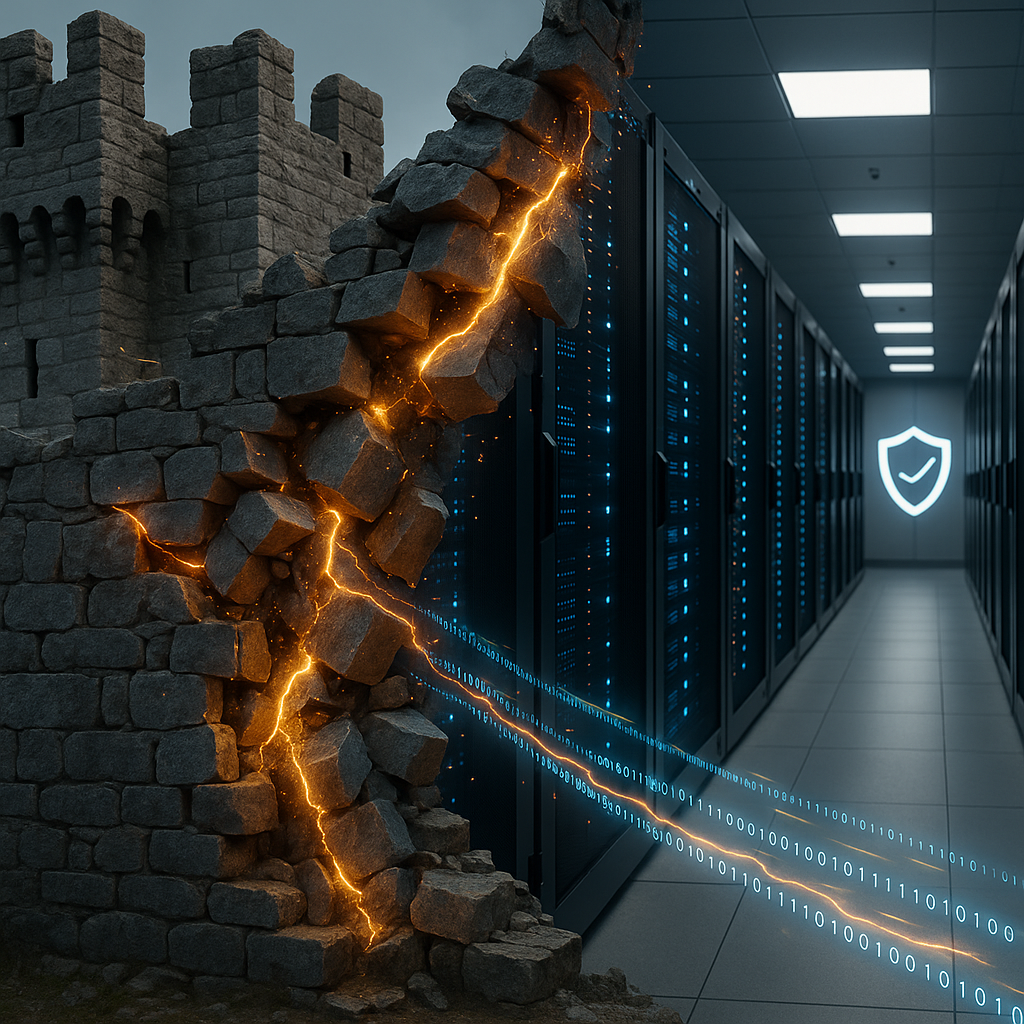
For decades, we’ve been taught to think of cybersecurity as a fortress. We build a strong perimeter (a corporate firewall) to keep the bad actors out and protect the valuable data inside. A perspective forged through years of analyzing enterprise systems suggests this model is now a dangerously nostalgic illusion.
In today’s world, the perimeter has dissolved. Your data doesn’t live neatly inside the castle walls anymore. It’s in cloud applications like Workday and Salesforce, on employee laptops in home offices, and moving between systems via a complex web of APIs. The idea of a single, defensible border is obsolete.
Why the Castle Wall Is Crumbling
Continuing to invest in higher, thicker walls is a losing strategy. The modern approach requires a complete philosophical shift, from a model of implicit trust to one of explicit verification. This is the core of Zero Trust Architecture.
Zero Trust isn’t a single product you can buy; it’s a strategic principle for designing secure systems. It operates on one simple, powerful assumption: presume that a breach is inevitable and that threats already exist both inside and outside your network. Therefore, you can’t trust any request for access until it’s been verified.
The Three Pillars of Zero Trust
This philosophy is built on a few core pillars:
- Verify Explicitly. Always authenticate and authorize every access request based on all available data points, not just who the user is, but their location, their device’s health, the service they’re accessing, and the data they’re requesting.
- Enforce Least Privilege Access. Give users and systems the absolute minimum level of access they need to perform their specific function. A user who can view a financial report should not, by default, also have the rights to modify the underlying data source.
- Assume Breach. Don’t allow a single compromised account to grant an attacker the keys to the entire kingdom. Segment network access so that even if an attacker gains a foothold, their ability to move laterally to other systems is severely restricted.
The Enterprise Systems Reality
This has massive implications for how we manage our core enterprise systems. It means every API call between your ERP and your CRM must be individually authenticated and authorized. It means access to sensitive financial data must be re-evaluated continuously based on context, not just a one-time login.
The future of enterprise security isn’t about protecting a perimeter that no longer exists. It’s about designing a system of continuous verification for a world with no borders. It’s time to stop trusting your network and start architecting for trust itself.
Let’s discuss building a more resilient security strategy. Please connect with me on LinkedIn.